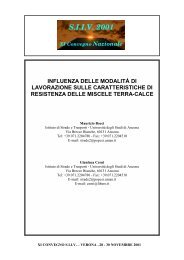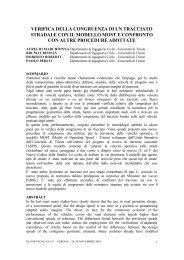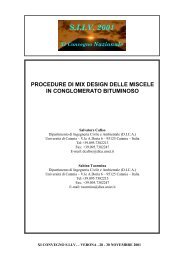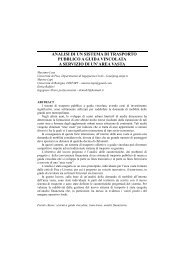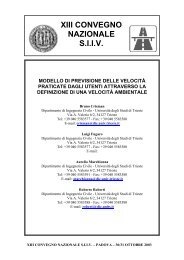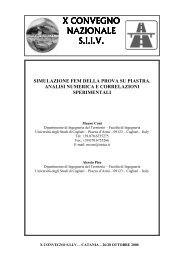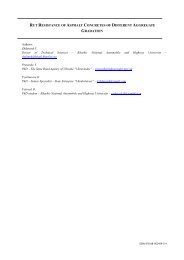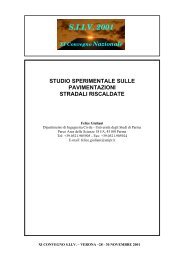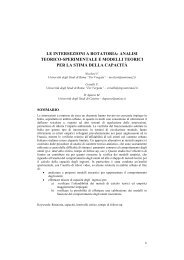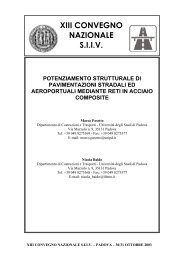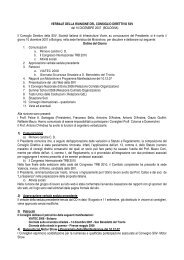DEF Grilli Andrea PhD Thesis 2007.pdf
DEF Grilli Andrea PhD Thesis 2007.pdf
DEF Grilli Andrea PhD Thesis 2007.pdf
You also want an ePaper? Increase the reach of your titles
YUMPU automatically turns print PDFs into web optimized ePapers that Google loves.
Chapter 1. Literature review – Part I<br />
needs of multilayered road pavements in terms of bending and their<br />
shear performance (Brown et al., 2001, Caltabiano and Brunton,<br />
1991).<br />
Rutting is due to the accumulation of permanent deformations or<br />
densification under loading cycles and high temperatures and appears<br />
as longitudinal depressions in the wheel paths. Rutting reduces the<br />
comfort of the pavement and, by affecting vehicle handling<br />
characteristics, creates serious hazards for highway users. In this case,<br />
the geosynthetic have to avoid plastic deformation and distribute shear<br />
loading.<br />
The most important characteristic of the geosynthetic is the geometry<br />
and the size of meshes and ribs which have to allow mechanical<br />
interlocking between the geosynthetic and the surrounding material.<br />
Currently, two different approaches are used to study the mechanical<br />
properties of asphalt pavements: empirical approach and theoretical<br />
approach.<br />
The empirical approach is based on physical principles, experiences<br />
and relative standard testing methods. This approach generally<br />
provides easy response related to the material behaviour but it can be<br />
rather approximate when applied to complex cases.<br />
The theoretical approach, such as finite element method or finite<br />
difference method, is based on numerical modelling which can deal<br />
with complex situations and offer different solutions. This approach<br />
can take into account the unhomogeneity and the non linear behaviour<br />
of materials. However, the reliability of this approach depends on the<br />
schematization of materials and on the constitutive law used.<br />
Both approaches have been used to understand the behaviour and the<br />
effects of geosynthetics in asphalt layers.<br />
The attempt of providing tensile reinforcement for asphalt pavements<br />
goes back to 1950’s. At the beginning all attempts experienced<br />
installation difficulties in laying the mesh flat but afterwards, with<br />
new technology, there were evidences of possible benefits related to<br />
the use of geosynthetics in road construction. However, the use of<br />
geosynthetics in asphalt layers is still considered a high-risk solution<br />
due to a lack of detailed design procedure.<br />
1.1 Location of geosynthetics in asphalt layer<br />
Reinforcement can be placed in different alternative locations in a<br />
road structure. Investigations carried out at the Nottingham University<br />
established that the use of geosynthetics in asphalt layers could<br />
27





